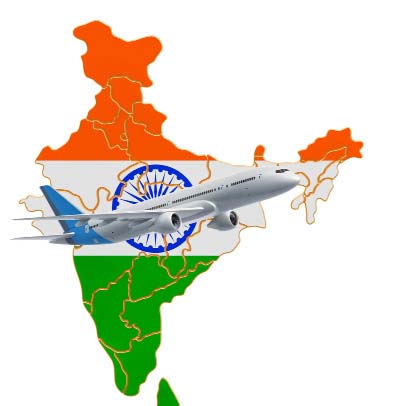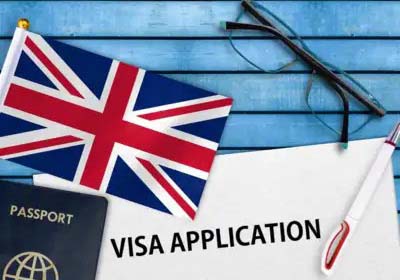Share the post "Improving International Connectivity in Our Neighbourhood. Extending UDAN Scheme to international destinations"
An UDDAN-type outbound scheme that helps kick-start international connectivity from tier 2/3 cities to export markets in the region, to destinations that can bring in additional tourists into India, provide a new awareness of India as it grows to become a still bigger player in the global arena.
Can a country achieve the status of a Superpower, or even a regional power, without proper connectivity with its neighbours? Of late, with growth of our airlines, and rise of outbound Indian travellers, we see a marked shift in Indian travellers looking for new places to visit. Yet there are so many places within two to five hours of flight from an Indian airport, which are not accessible to our public with a direct flight. Our private airlines have taken a leap in direct flights abroad to multiple destinations after ascertaining the high growing demand especially by Indian travellers looking for new destinations. However, more needs to be done to build person to person contacts as a strategic policy.
 For instance, in spite of our Act East policy, we have excellent connectivity with only three of the ten ASEAN countries, that too where many Indians use it as a hub to connect to other 7 Countries of ASEAN and for going beyond.
For instance, in spite of our Act East policy, we have excellent connectivity with only three of the ten ASEAN countries, that too where many Indians use it as a hub to connect to other 7 Countries of ASEAN and for going beyond.
Very recently direct flights to Philippines, Indonesia, Cambodia and Vietnam have started. Earlier attempts to these connections failed as they became unviable over time due to lack of traffic. We still don’t have any direct connectivity with Laos. Then we need to look at new and innovative city pairs. Most of existing connectivity is with Delhi or Mumbai. However, we need to connect with other cities of India like Bengarulu, Kolkata, Hyderabad and Chennai which are fast growing hubs as well as to other than capital cities of these nations. Incoming original traffic of nationals from ASEAN countries to India remains minimal and has not increased much over time, which is a very necessary from a strategic viewpoint to make citizens of these country appreciate India and its people.

Our tourism related locations i.e. temples, churches, Buddhist Gompas, mosques are some of the finest. Some of these holy places can draw a large number of foreign tourists from our neighbourhood, provided there are direct flights. Even the famous temple town of Khajuraho has no international flights.
Then again, we have medical ‘tourism’. India offers excellent medical facilities which attract many patients from our neighbourhood. In this connection even our airports can play a role by offering land to build hospitals in an airport complex in addition to hotels. Again, India offers good education at reasonable cost. This can attract a lot of students from our neighbourhood to come and study in India. It will help build our educational institutions as well. With value of the Rupee declining vi-a-vis the US Dollar, it makes India even more attractive. Other alternatives like beaches or palaces converted to hotels are also great attraction.
Western Countries Tightening Visa Rules and Its Impact
With US, UK and Australia tightening visa rules, Indian are looking for new locations. Students are finding studying in US, UK, Canada and Australia more difficult for many reasons. They are now finding locations like China, Russia, Ukraine, Bangladesh, Kyrgyzstan, Kazakhstan, Uzbekistan, Georgia, Philippines, Malaysia, Cyprus, Mauritius, Vietnam, Austria, Italy, Hungary, Albania etc attractive and cheaper. If better direct air connectivity can be provided to these locations, then more students and people will visit. Eastern Europe and Central Asia are becoming popular destinations for Indian students. Uzbekistan alone hosts over 6000 students. A rising number of students go abroad are from 2/3 tier towns especially from southern cities like Warangal, Tirupati, etc. In choosing locations for study abroad, they look at direct and cheap connectivity. Then their parents and friends would also like to visit them. That’s how traffic builds up. However, poor and expensive connectivity is a major hinderance.
The Ease of Doing Business
The Ease of Doing Business is an index created by the World Bank. Higher rankings (a low numerical value) indicate better, usually simpler, regulations for businesses and stronger protections of property rights, etc. Economies are ranked on their ease of doing business, from 1 to 190. A high ease of doing business ranking means the regulatory environment is more conducive to the starting an operation of a local firm. The rankings are determined by sorting the aggregate distance to frontier scores on 10 topics, each consisting of several indicators, giving equal weight to each topic. The rankings for all economies are benchmarked to June 2017. India jumped up 30 notches in 2017 into the top 100th rank on the World Bank’s “Ease of Doing Business” index, thanks to major improvements in India such as resolving insolvency, ease of paying taxes, protecting minority investors and getting credit. However, we need better connectivity as businessmen also look for direct connectivity and avoid an area if the route is long and inconvenient.
US Tariffs and the need to diversify our exports: finding new markets
The recent imposition of steep 50% tariffs by the US on our exports to them will impact very adversely. US is a very big market. Loosing that market due to high tariffs and establishing new markets requires a much greater effort. The need to spread wide our exports has now become an existential crisis for India. We need to think of spreading our exports to other countries however small their market be. We need better connectivity from our 2/3 tier towns to countries of Central Asia, ASEAN and Indian Ocean Region. The SMSE sector was already badly hit by demonetisation and GST and is now getting hit by the US tariffs policy. The GST 2.0 will surely be the much-needed relief, but we still need to act to find new markets for our products for which physical travel to potential countries by small and medium sector entrepreneurs is essential. Diversification of export markets is critical.


 Development of International Air Connectivity Scheme (IACS)
Development of International Air Connectivity Scheme (IACS)
In 2021 Ministry of Civil Aviation had put out on their website an UDAN Manual. It contained a proposal for IACS on lines of UDAN. In order facilitate / stimulate international connectivity from certain airports for direct flights abroad, the Ministry of Civil Aviation (MoCA) envisioned the International Air Connectivity Scheme (IACS). An independent scheme, the IACS was designed based on the understanding of Indian aviation, derived from the formulation stages and experiences of the implementation phases of the then existing UDAN (Ude Desh Ka Aam Nagrik) Scheme. MoCA conducted an analysis of a number of innovative bidding models for IACS based on a variety of factors including fairness and extent of support to airlines, ease of implementation as well as the objectives of MoCA and State Governments.
The bidding models analysed included a seat underwriting model, a model similar to RCS (Regional Connectivity Scheme-mine) and a cost-minus-revenue model. The cost-minus-revenue was the model that was selected because it fulfilled the multiple objectives of limiting VGF outflow, risk mitigation for airlines as well as an incentive for airlines to market the routes and sell more seats.
While UDAN scheme has been a success, the IACS scheme as enumerated above had poor response from state governments. However, as the situation has changed dramatically due to external factors, there is a need to revamp the scheme and introduce it urgently. As this situation is not due to domestic issues, but impinges on our external factors, there is a need for the central government including the Ministry of External Affairs, to also chip in some funds along with state governments to make this scheme viable. A new revamped UDAN OUTBOUND scheme should be immediately formulated and implemented. The scheme should be based on local demand from state governments to have direct flights from 2/3 tier towns to foreign markets or places of study for students. For example, Tirupur is the largest textile export hub, followed by Ludhiana and Ichalkaranji (Maharashtra) need to immediately locate alternate markets. As flights become viable, the subsidy can be reduced/ taken off. If subsidised flights can take off directly from such locations to desired locations abroad, it would provide a bridge to these exporters, encourage students to study in countries where it’s cheaper and visa is not an issue, encourage more medical tourism into India and finally draw more tourists into India bypassing congested metro cities.

